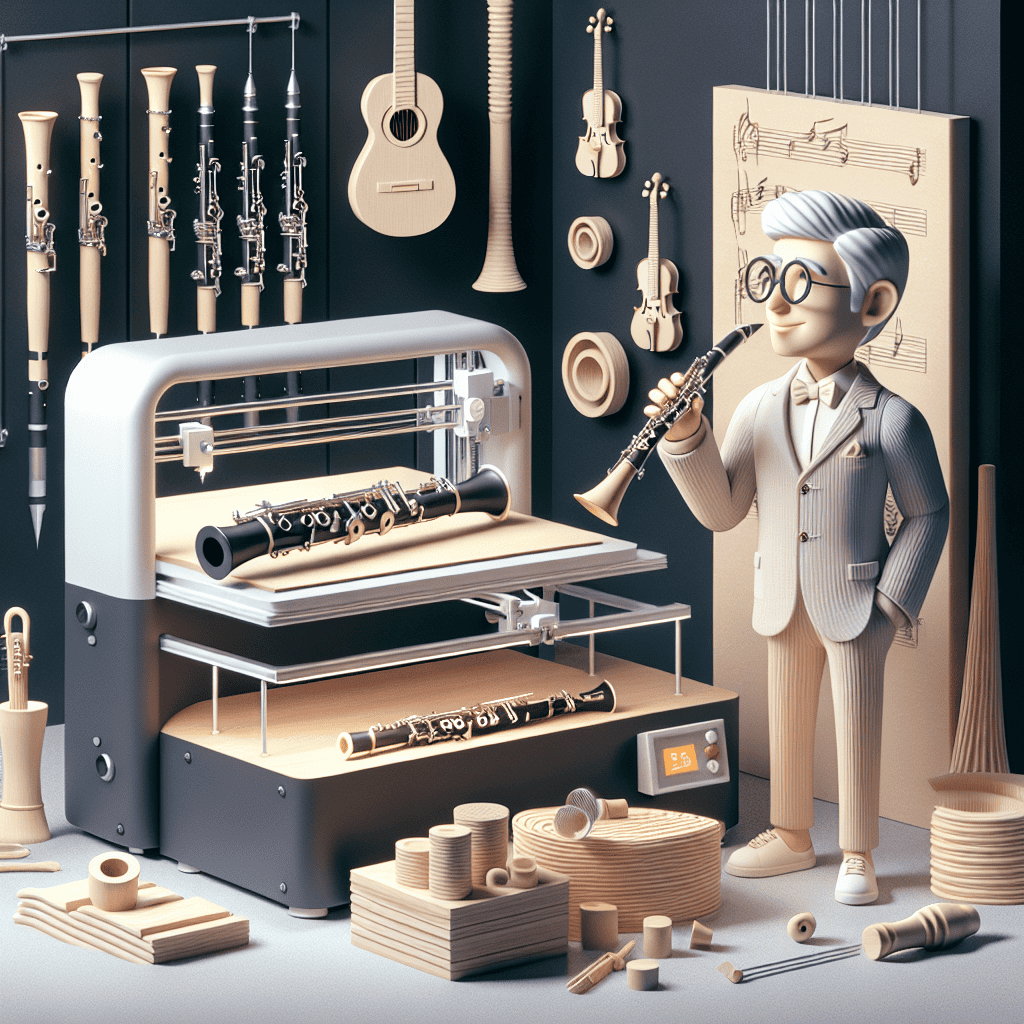Clarinets have a rich history and a vibrant culture that continues to evolve. Whether you're a seasoned musician or just starting out, staying up-to-date with the latest clarinet trends can make your playing experience even better. Let's dive into the latest trends every clarinet enthusiast should know about!
Advancements in Clarinet Materials
Clarinets have traditionally been made from grenadilla wood, but modern innovations have introduced new materials that offer better durability and sound quality. For example, carbon fiber and other synthetic materials are becoming popular. These materials are tough and less affected by changes in temperature and humidity, making them perfect for musicians on the go.
| Material | Advantages | Disadvantages |
|---|---|---|
| Grenadilla Wood | Rich, warm tone; Traditional | Sensitive to climate changes |
| Carbon Fiber | Durable; Climate resistant | Different sound quality |
| Synthetic Materials | Affordable; Low maintenance | May lack depth in tone |
Customization and Personalization
More and more musicians want instruments that reflect their personal style. Customizable clarinets are on the rise, allowing players to choose features like key plating, barrel shapes, and bell designs. This trend is especially popular among professional clarinetists who want an instrument that matches their unique playing style. Companies like Martin Freres offer a range of customizable options to meet individual needs.
Technological Integration
Technology is making its way into clarinet playing and teaching. Digital tuners, metronomes, and practice apps are now common tools. These gadgets help musicians improve their technique, timing, and overall performance. Smart clarinets with sensors and connectivity features are also emerging, offering real-time feedback and interactive learning experiences. This tech evolution is helping both beginners and advanced players reach their musical goals.
Popular Clarinet Tech Tools
- Digital tuners with clip-on capabilities
- Smartphone metronome apps
- Practice tracking software
- Smart clarinets with built-in sensors
- Virtual reality music learning platforms
Eco-Friendly Manufacturing
With growing environmental concerns, many clarinet makers are adopting eco-friendly practices. Sustainable wood sourcing, waste reduction, and biodegradable materials are becoming standard. Eco-conscious musicians are looking for instruments that align with their values, and brands that prioritize sustainability are gaining favor. Martin Freres, known for their commitment to quality and innovation, is also exploring eco-friendly options to meet the demands of environmentally aware musicians.
Vintage and Retro Revival
There's a growing interest in vintage and retro clarinets. Musicians are drawn to the unique sound and craftsmanship of older instruments. Collectors and players alike are on the lookout for well-preserved vintage clarinets that offer a special playing experience. This trend is not just about nostalgia but also about appreciating the rich heritage and artistry of vintage clarinets.
Ergonomic Designs
Playing comfort is a big deal for many clarinetists, leading to the development of ergonomic designs. Manufacturers are creating clarinets with features that reduce strain and discomfort during long playing sessions. Adjustable thumb rests, lighter materials, and redesigned key systems are some of the innovations aimed at enhancing player comfort. These ergonomic improvements are especially helpful for younger players and those with smaller hands.
Educational Resources and Online Learning
The availability of online educational resources has changed the way people learn the clarinet. From video tutorials to virtual masterclasses, musicians have access to a wealth of information at their fingertips. Online platforms offer lessons from renowned clarinetists, allowing students to learn from the best no matter where they are. This trend has made high-quality music education accessible to a wider audience.
Collaborations and Cross-Genre Experimentation
Clarinets are no longer just for classical music; they're making their mark in various musical genres. Collaborations between clarinetists and artists from different musical backgrounds are becoming more common. This cross-genre experimentation is expanding the horizons of clarinet music, introducing new styles and techniques. Jazz, pop, and even electronic music are now featuring clarinet sounds, showcasing the instrument's versatility and adaptability.
Clarinet in Different Genres
- Classical: Traditional orchestral and chamber music
- Jazz: Improvisation and swing music
- Folk: Traditional and world music styles
- Pop: Contemporary and mainstream music
- Electronic: Fusion with electronic instruments and effects
Maintenance and Repair Innovations
Maintaining and repairing clarinets has also seen advancements. New cleaning tools, lubricants, and repair kits are making it easier for musicians to care for their instruments. Professional repair services are using modern techniques and equipment to keep clarinets in top shape. Regular maintenance is crucial for preserving the sound quality and longevity of the instrument, and these innovations are simplifying the process for musicians.
Conclusion
The clarinet world is always changing, with trends that cater to both traditionalists and modernists. Whether it's through innovative materials, technological integration, or ergonomic designs, the clarinet continues to adapt and thrive. As these trends shape the future of clarinet playing, musicians can look forward to a richer, more diverse musical journey. Stay informed and embrace these trends to enhance your clarinet experience.







